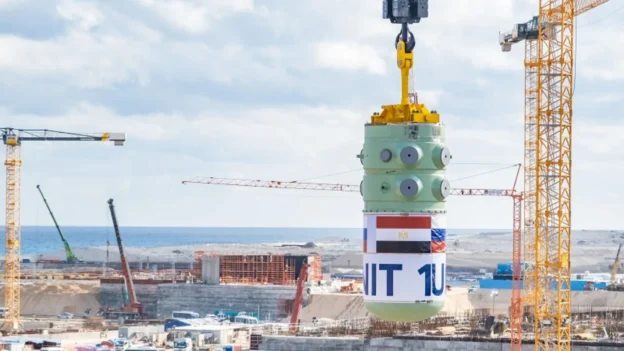The El-Dabaa nuclear power plant is progressing with the installation of the reactor vessel at Unit 1 on Egypt’s Mediterranean coast. This component was placed in its final position on November 19, in the virtual presence of the presidents of Russia and Egypt, Vladimir Putin and Abdel Fattah al-Sisi.
Technical achievement at Egypt’s El-Dabaa nuclear power plant
This event coincided with Atomic Energy Day in Egypt, where Rosatom confirmed that this stage represents the project’s most important production breakthrough of the year. The 340-ton metal structure was hoisted and precisely aligned in the
The El-Dabaa project introduces Russian-made third-generation VVER-1200 reactor technology for the first time in Africa. These pressurized light water units represent an evolution in safety and efficiency. This plan calls for four units of 1200 MW each, with Unit 1 being the first to receive its reactor.
The installation was preceded by a thorough inspection process involving technicians from Rosatom’s Engineering Division, representatives of the manufacturer, the Egyptian regulatory authorities and the site operator. Following validation, mechanical assembly proceeded, marking a point of no return in the project’s progress.
In addition to Rosatom, Russia will be in charge of the supply of nuclear fuel for the entire lifetime of the complex. It will also provide technical training for Egyptian personnel and build spent fuel storage facilities.
The El-Dabaa nuclear power plant is located some 300 km northwest of Cairo and is part of Egypt’s strategy to diversify its energy matrix. The development, which is being carried out by Rosatom’s Engineering Division, currently has more than 30,000 people working on site and is part of the Russian state-owned company’s global portfolio of nuclear projects, which leads the sector in terms of the number of units built simultaneously.
Source and photo: Atom Media


